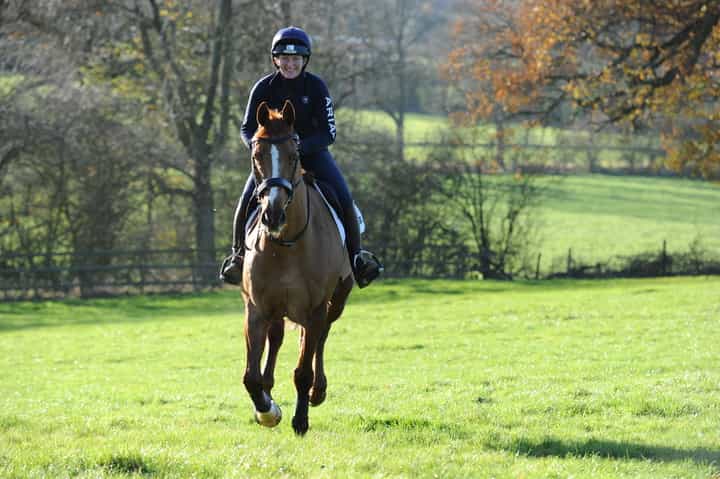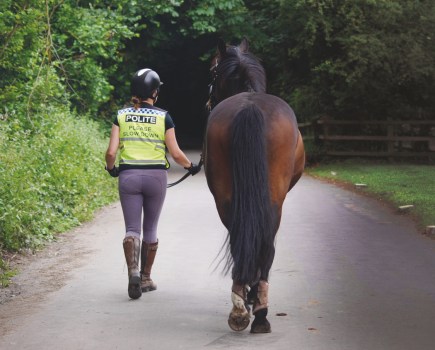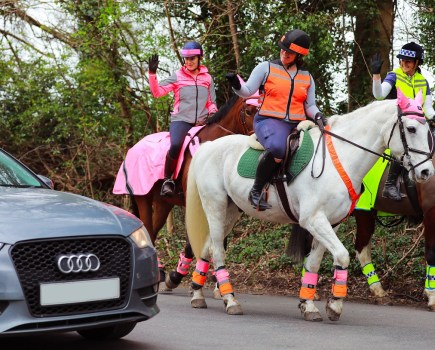Schooling while out hacking encourages repetition, clarity and consistency of your aids.
You can use this time to train your horse to accept being on the bit, moving off the leg, and for transitions between walk, trot and canter.
If you have access and permission to hack on level moorland, heathland or a well-drained field, use it for schooling. When hacking to and from the arena, encourage your horse to stretch his neck and body to warm up and cool down.
Hill work
Walking or slow cantering uphill provides a workout for the cardiovascular system and creates a stronger core and topline if you work your horse in the correct outline.
Downhill can help your horse develop balance, as well as engagement and core strength – again it’s important to consider your outline.
Don’t let him plod
Your horse’s walk should be active and rhythmical. Even if he isn’t truly on the bit, at least have him working towards being on the bit, with a pliable contact for him to work into so be begins to build the correct muscles.
Spice it up
Variety is often key to keeping horses sound, supple and healthy, as well as interested in what you are asking of them. If your horse is prone to boredom out on a hack, make use of different routes and try not to have set areas where you walk, trot and canter. Change it up a bit – this will help him listen to you rather than predicting what you’ll ask.
Walking in long grass, shallow rivers and the sea is a fun way to achieve a great cardio workout without putting undue stress on your horse’s joints.
Find the full article with performance coach Marie Ryan in issue 449, for more tips about improving your horse’s fitness, whether in the arena or on a hack. Available here.
Don’t miss the latest issue of Your Horse Magazine, jam-packed with training and veterinary advice, horse-care tips and the latest equestrian products available on shop shelves, on sale now.










